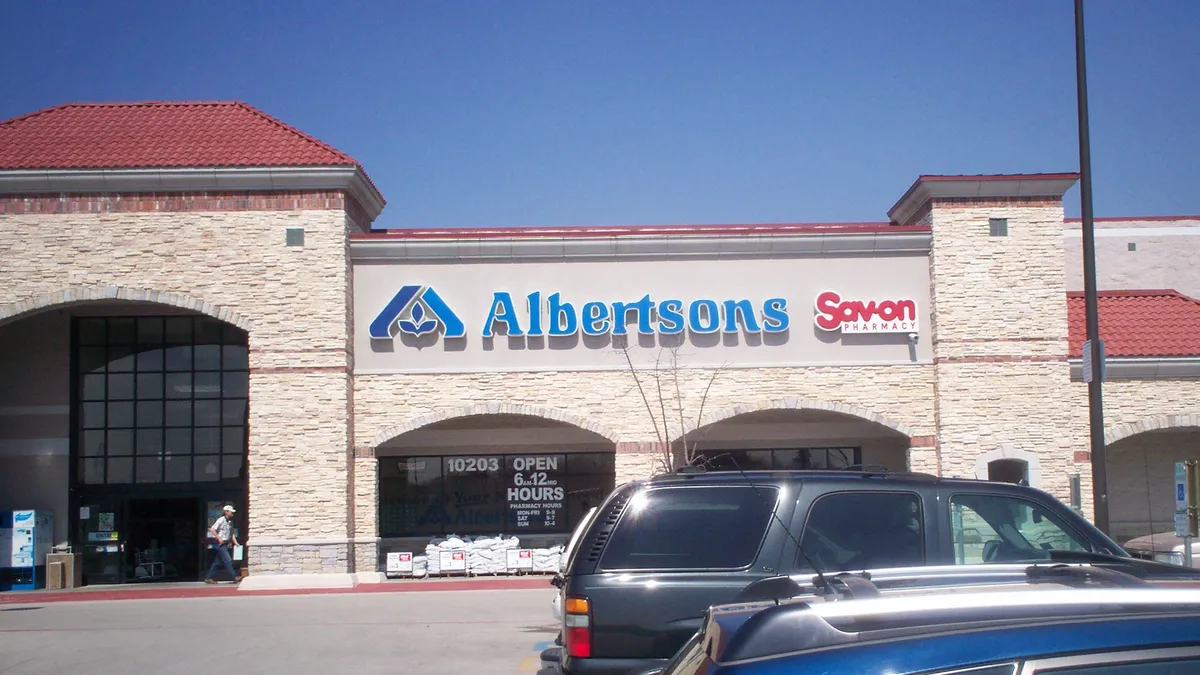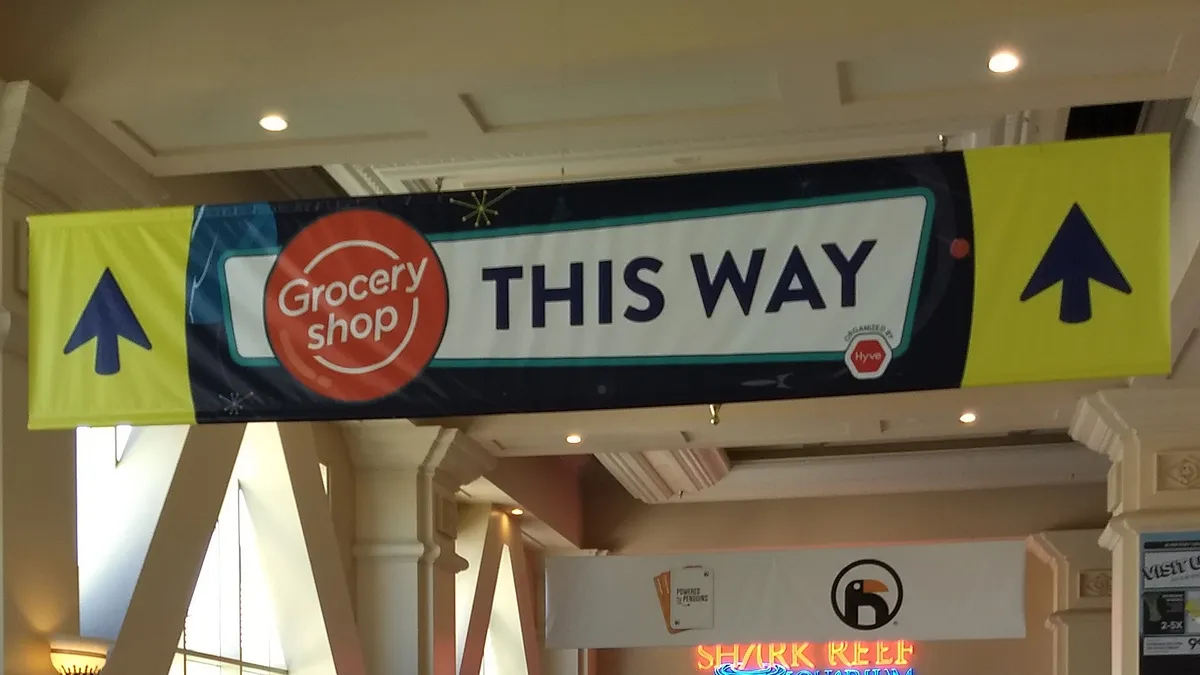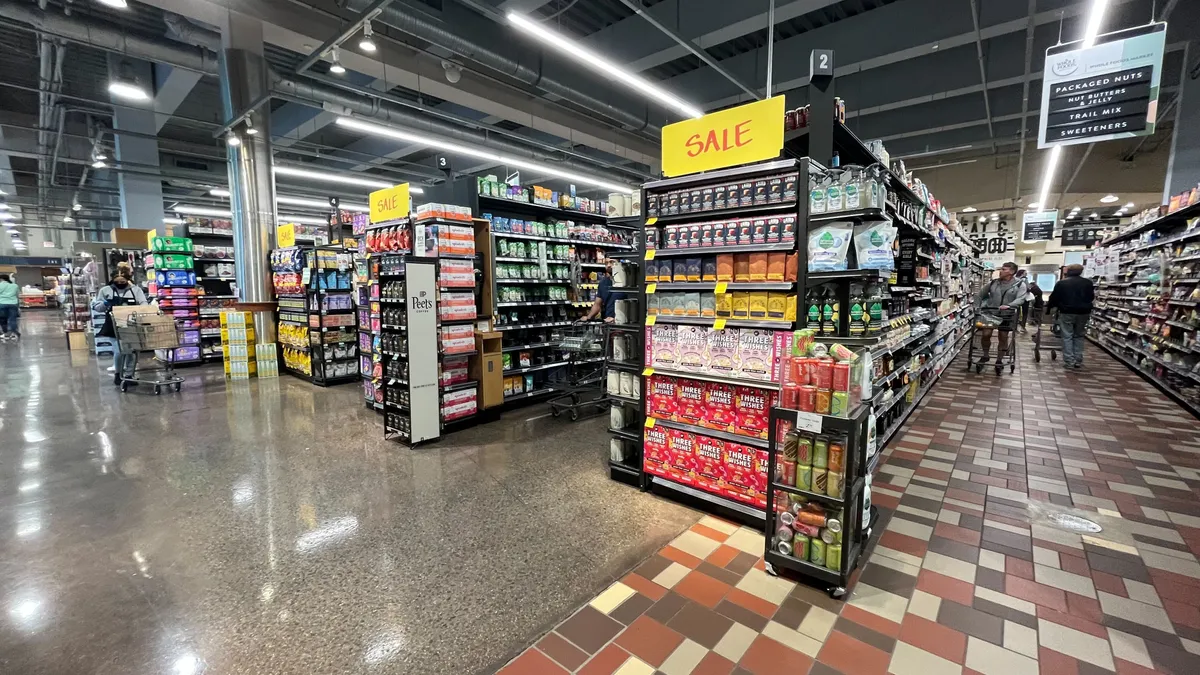Dive Brief:
- Albertsons on Wednesday reported fourth-quarter sales of $14 billion, up 1.6% from the year-ago period, according to a company filing. Gross profit margin decreased 30 basis points to 28.1% due to promotional investments and loss of inventory, while comp-store sales increased 0.6%. For its 2018 fiscal year ahead, the grocer expects operating income of approximately $280 million to $320 million with adjusted EBITDA of approximately $2.7 billion.
- Rite Aid reported fourth quarter revenue down 8.6% from the year-ago period, to $5.4 billion. Pharmacy sales declined 10% to $4 billion, partly because of an extra week in last year's fourth quarter, but also due to a decline in same store sales. Still, the company forecast a profit for the fiscal year ahead thanks to rising reimbursement rates and better generic drug prices thanks to a deal with Walgreens.
- Albertsons announced in February it would merge with Rite Aid, creating a company with estimated revenues of $83 billion. The merger is expected to close sometime during the second half of this year.
Dive Insight:
Although both Albertsons and Rite Aid reported positive outlooks for the year ahead, analysts and shareholders remain skeptical about the potential of the combined company.
Both retailers are facing significant challenges. Although Albertsons has grown its footprint dramatically under Cerberus Capital, it remains highly leveraged and subject to intense industry competition. The company’s food traffic continues to fall. The grocer, which owns 19 banners including Safeway, Jewel-Osco, United Supermarkets and Shaw’s, saw its customer count fall by 0.8% during this most recent quarter, though higher bills helped offset most of this decline.
Rite Aid, despite its positive outlook for the year ahead, has struggled with lackluster sales and declining pharmacy revenues. The latter metric is expected to rise as reimbursement rates improve and the chain achieves better generic drug prices as part of a pact with Walgreens, which included the purchase of 1,932 Rite Aid stores in recent months. But the business remains under pressure.
Overall, Rite Aid is a well-known brand that’s been a weak performer during the past few years, according to analysts, and a distant third in the retail pharmacy race headlined by CVS and Walgreens.
The merger with Albertsons stands to boost Rite Aid’s exposure, but some of the pharmacy retailer’s investors aren’t keen on the deal. As The Wall Street Journal reported this week, they believe the company is undervalued, and are reluctant to gain exposure to the highly competitive supermarket industry. At least one major Rite Aid shareholder plans to vote against the deal, the business publication reported.
However, both companies have core strengths that could work well under one roof. Albertsons' merchandising expertise and growing private label brands could boost Rite Aid’s anemic retail sales. Rite Aid branded pharmacies inside Albertsons stores could elevate the sector in shoppers’ eyes, while the pharmacy chain’s expertise in navigating the complexities of the healthcare industry could be a boon.
In a recent report, investment firm Moody’s noted the combined companies could offer significant cost synergies, operational improvements and opportunities to cross-sell food and nonfood items. But the merger execution needs to be seamless, or both companies’ weaknesses could become even greater liabilities.
“The combination of two companies that are facing different types of industry pressure can lead to accelerated downward pressure on a combined basis,” Moody’s analysts wrote in the report.
For now, both Albertsons and Rite Aid are painting an upbeat and optimistic future, both individually and as a combined entity. But the reality is the future is anything but certain and the companies have a lot of work ahead regardless of whether they join forces or remain apart.










